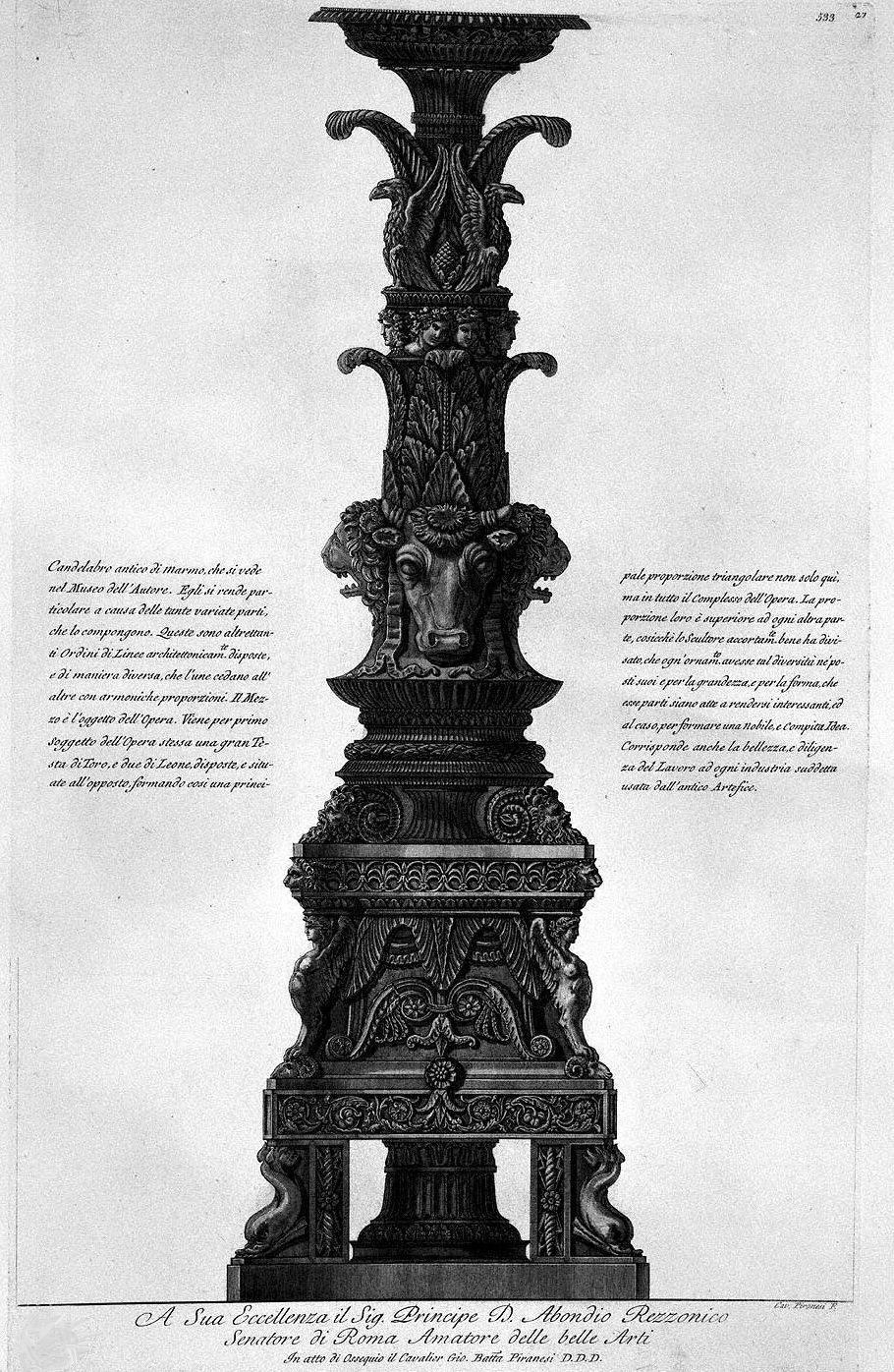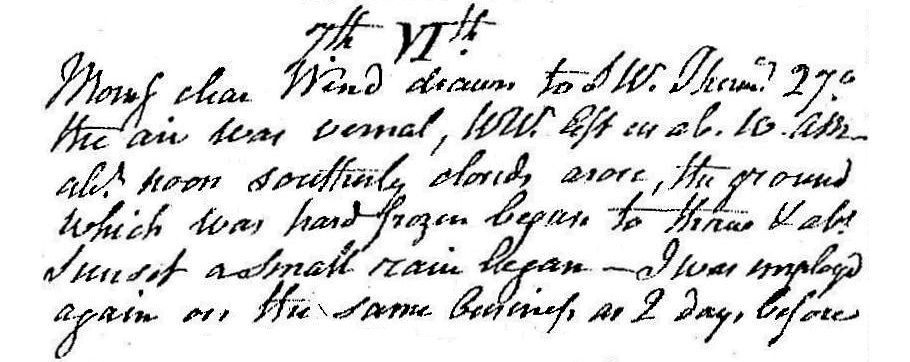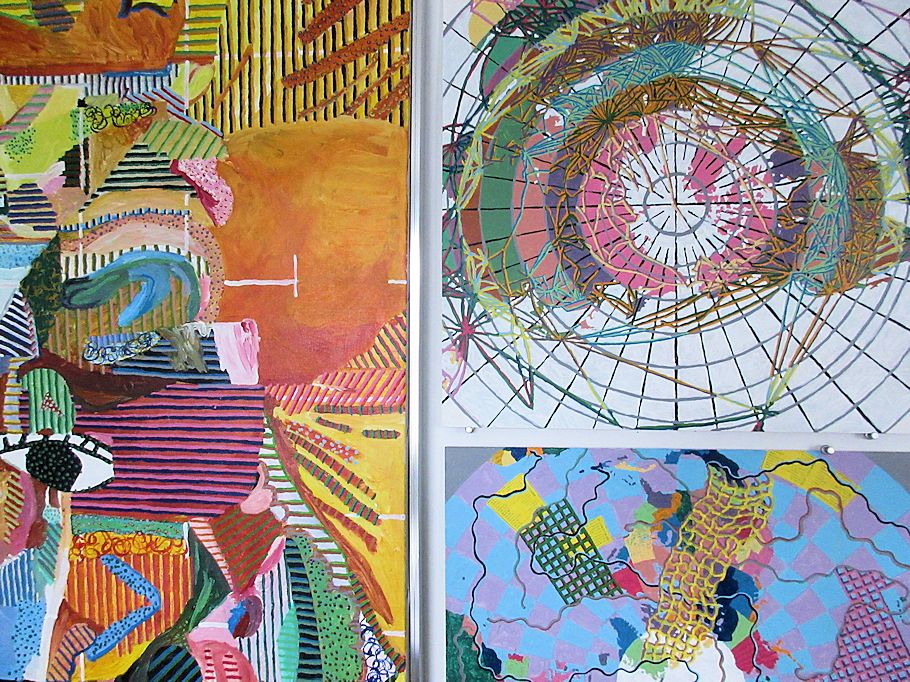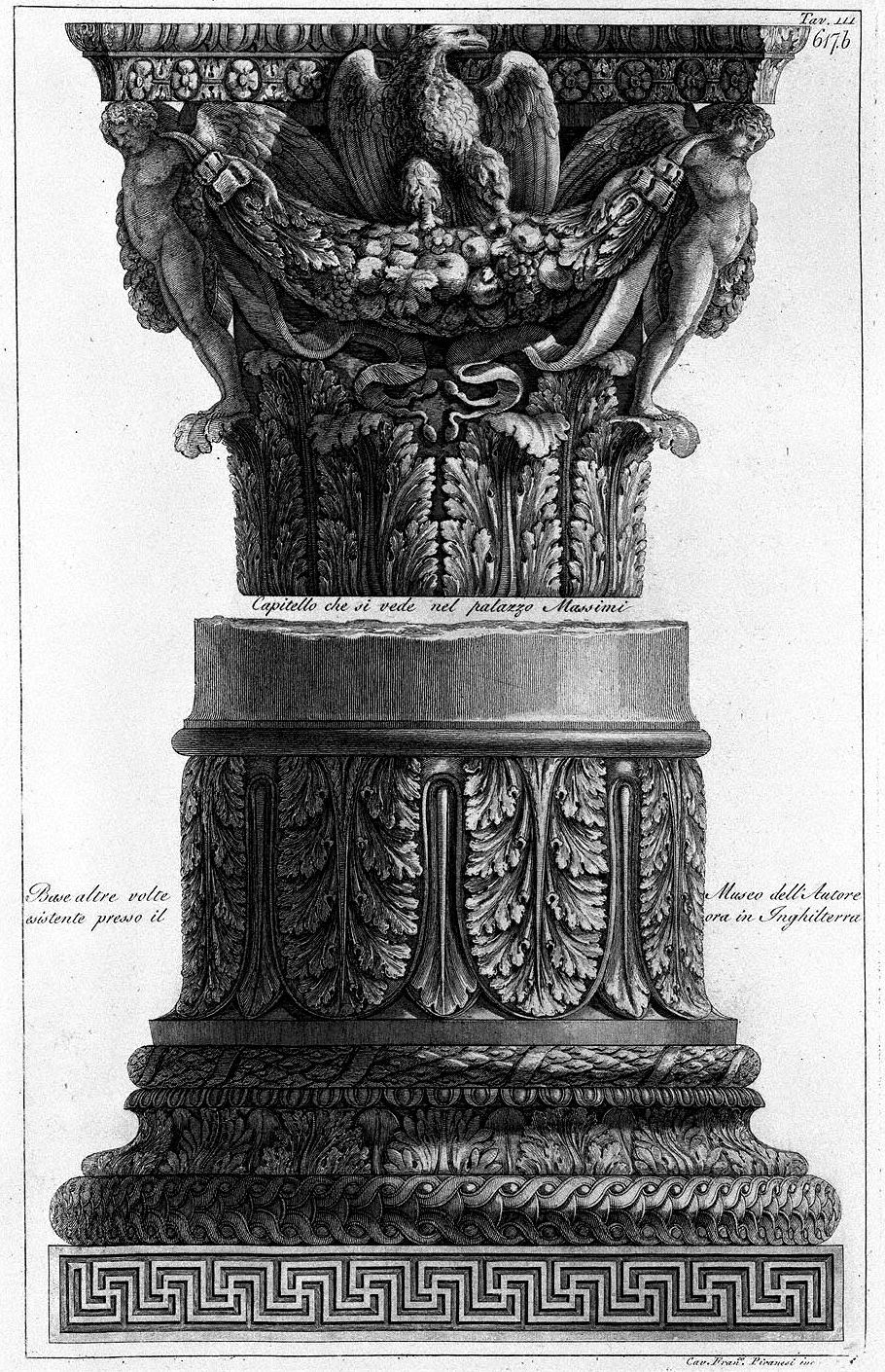7 February 1778 Saturday
Vases, Candelabra, Grave Stones, Sarcophagi. Tripods, Lamps and Ancient Ornaments volume I

To His Excellency the Prince D. Abondio Rezzonico Senator of Rome Amateur of the fine arts
In deed of respect the Cavalier Gio. Batt(ist)a Piranesi D. D. D.
Ancient marble candelabrum, which can be seen in the Author's Museum. He makes himself particular due to the many varied parts that compose him. These are as many Orders of Lines arranged architecturally, and in different ways, which one yield to the other with harmonic proportions. The Medium is the object of the Work. The first subject of the Work itself is a large Head of a Bull, and two of a Lion, arranged and located opposite each other, thus forming a main triangular proportion not only here, but throughout the whole Complex of the Work. Their proportion is greater than any other part, so that the Sculptor shrewdly devised well that each ornament should have such diversity in its places and for the size and for the shape, that these parts are apt to become interesting, and to the case, to form a Noble and Complete Idea. The beauty and diligence of the Work also corresponds to each aforesaid industry used by the ancient Artificer.
Cav. Piranesi F.
7 February 1812 Friday

Morning clear, wind drawn to SW. Therm. 27°, the air was vernal. W.W. left us about 10 AM. About noon southerly clouds arose, The ground which was hard frozen began to thaw and about sunset a small rain began. I was employed again in the same business as two days before.
7 February 2007
meaning of labyrinth, etc.
...recently read a good explanation of labyrinth (vis-à-vis architecture) and then thought how it relates to Piranesi's Campo Marzio plan, or at least how the labyrinth relates to some of the interpretations of the Ichnographia. ...the passages are within L.B. Alberti's Hypnerotomachia Poliphili.
"Along with incomprehensible epigrams and inscriptions, unknowable animals and humans, the Hypnerotomachia is full of obscure, dark, intractable places: forests, veiled entrances, labyrinths. Indeed, the labyrinth--a kind of emblem of hermetic difficulty, the symbol par excellence of search and the abstract model for most kinds of problem-solving activities--marks almost every step of the hero's wanderings as he makes his way through the story. As early as the first chapter, the reader follows the hero through a forest as he exclaims, "I had as my only recourse to implore the pity of the Cretan Ariadne, who gave the thread to Theseus to get out of the difficult labyrinth." Readers are constantly finding themselves within labyrinths: one inside the viscera of the temple at the base of the pyramid; an aquatic one in the form of a circular, maze-like pool; the concentric-patterned garden on the island of Cythera; and the subterranean spaces under a landscape of ruins."
"The book itself is a labyrinth, a series of veils, a cryptic epigram."
Liane Lefaivre, Leon Battista Alberti's Hypnerotomachia Poliphili, pp. 90, 91.
7 February 2019

7 February 2023 Tuesday
Vases, Candelabra, Grave Stones, Sarcophagi. Tripods, Lamps and Ancient Ornaments volume II

Capital that can be seen in the Massimi palace
Base formerly existing at the Author's Museum now in England
Cava. Franc.co Piranesi inc. 1778?
|